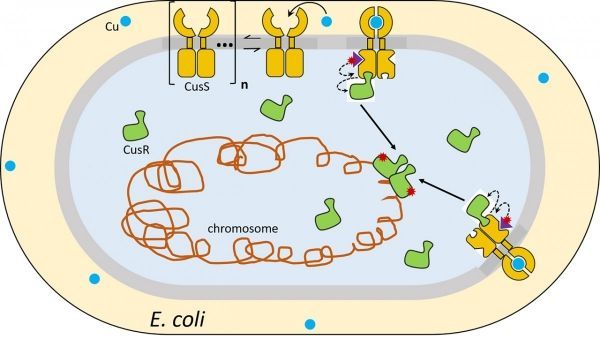Bacteria have a cunning ability to survive in unfriendly environments.
Bacteria have a cunning ability to survive in unfriendly environments.
For example, through a complicated series of interactions, they can identify – and then build resistance to – toxic chemicals and metals, such as silver and copper. Bacteria rely on a similar mechanism for defending against antibiotics.
Cornell researchers combined genetic engineering, single-molecule tracking and protein quantitation to get a closer look at this mechanism and understand how it functions. The knowledge could lead to the development of more effective antibacterial treatments.
The team’s paper, “Metal-Induced Sensor Mobilization Turns on Affinity to Activate Regulator for Metal Detoxification in Live Bacteria,” published May 28 in Proceedings of the National Academy of Sciences.
Read more at Cornell University
Image: In E. coli bacterium, the inner membrane sensor protein CusS mobilizes from a clustered form upon sensing copper ions in the environment. CusS recruits the transcription regulator protein CusR and then breaks down ATP to phosphorylate CusR, which then proceeds to activate gene expression to help the cell defend against the toxic copper ions. CREDIT: Cornell University




